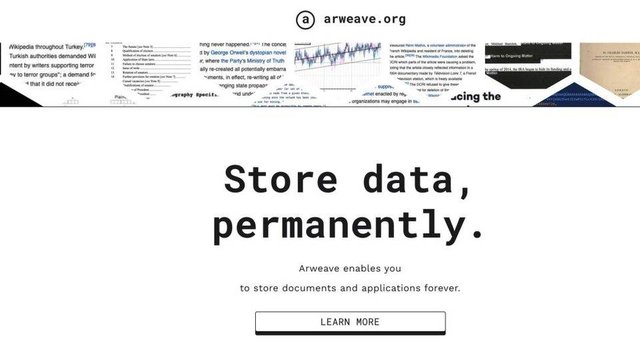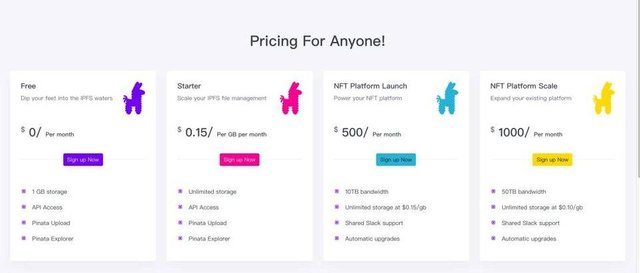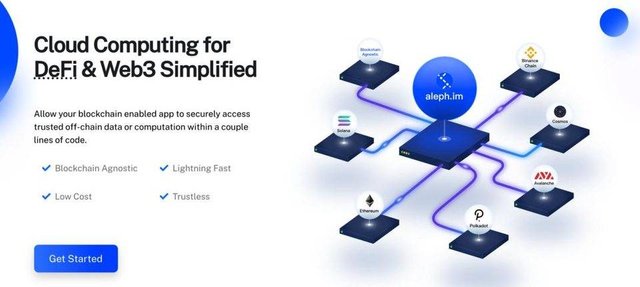The neglected part of the NFT boom: Why is data storage important?
Some believe that NFTs are a radically new form of digital ownership, trying to remove centralized corporate control.
For example, in a traditional game, even though you have bought a lot of cool equipment and props, you seem to have a lot of digital assets in the game. But still subject to the limits of the game party, you don't really own the assets. Therefore, after the emergence of NFT, people hope that in the end there will be digital assets that can truly be "owned". As long as there are tokens, you will have the appropriate digital artwork. NFT represents a new generation of digital asset ownership.
Is that right?
In fact, things are not that simple. Many NFTs are more centralized than investors believe. The real situation may be that the "real ownership" we expect the NFT to give us may not be real.
Data retention problems
The NFT cannot do without storage. Although this issue is rarely raised by NFT enthusiasts.
While there are decentralized forms of NFTs, most of the NFT marketplaces, including Nifty Gateway , SuperRare, Rarible, Opensea, etc., are the same as traditional online stores, with some centralized components.
For example, if you buy an NFT, the token itself is on the blockchain. However, due to the high cost of storing files in the chain, especially large files such as videos, media such as images and videos associated with tokens are usually stored off-chain.
That is, the data for the NFT token portion itself is centralized, but often the media corresponding to the NFT image and other media is stored off-chain, and the hash value data of these files is stored in the NFT token metadata. The NFT storage method is determined by the artist or platform, which means that photos, videos and other files that are compatible in the NFT can be stored on a centralized server.
I have to say that for NFT buyers, this would pose a problem: What if the company that stores the NFT media files goes bankrupt? How do you make sure that the NFT they purchased is really still there? Instead of turning into a bubble?
Recently, a programmer on Twitter wrote an in-depth post about NFT, exploring where the media cited by NFT actually exists.
He found that typically NFT tokens point to an off-chain storage location. In metadata, either an HTTP URL link or an IPFS Hash value is used.
What's wrong with using a URL?
Since HTTP URLs are an addressing method, linking files to specific sites with specific owner-controlled data is essentially a centralized storage method. If the NFT relies on metadata from the HTTP URL, this means that the NFT holder cannot actually own the NFT at all, as the publisher must continue to maintain the server for this NFT to be meaningful. In other words, once the server that stores this media is shut down or turned off, this NFT is nothing but empty.

Recent fire beeples can be used as an example. The Crossroad NFT made by Beeple is released on the Nifty Gateway platform. The token image metadata is the HTTP URL hosted on Nifty servers. The URL contains Crossroad metadata. The metadata text then points to another HTTP URL, which contains the actual visual media from Crossroad, which is hosted on a cloud server-based media service, but is still served by Nifty's servers, as shown in the image below.

This means that if the Nifty platform goes bankrupt and the servers go down, the Crossroad NFT owner will only have one token pointing to an expired HTTP URL. The metadata and images attached to the NFT depend on Nifty's continuous operations.
Such an example never happened.
In early March, musician 3LAU sold an NFT album at NiftyGateway for $ 11 million, but this NFT is now gone. While you can still find a copy of the 3LAU album at NiftyGateway, the true NFT assets can no longer be retrieved, as the 3LAU NFT is indexed by HTTP URLs and housed on a centralized server.
So, what if a decentralized storage solution was used?
Decentralized storage solution: IPFS
IPFS, or Interplanetary File System, is a protocol for sharing and storing data centered on a decentralized peer-to-peer network. This enables content addressable storage (CAS), meaning that the content itself can be hashed (encrypted) and referenced.
The difference between the HTTP URL addressing method and the IPFS content addressing method can be understood in this way.
Traditional URLs are like telling someone to watch a certain movie at a particular cinema (for example: open iQiyi to watch "The Godfather"), whereas storage with a content address is like telling someone to only watch that movie in normal circumstances (for example,: Open "The Godfather "). The first one requires permission from iQiyi; the latter simply requires the existence of a film, because anyone who has watched "The Godfather" anywhere will see the exact same content.
In theory, media files stored using CAS over protocols such as IPFS can be completely fragmented, while still verifiable and immutable. But the reality is not that simple.
Explore IPFS details
Files that are hosted via the IPFS protocol must also be stored in nodes on the IPFS network. Although many major centralized NFT marketplaces use IPFS for storage, they actually intend to host these files through their own private gateways as nodes.
This means that even though the method adopted by the NFT is to directly reference media stored on IPFS, media files may still require that IPFS nodes operated by certain centralized NFT markets remain online, otherwise the NFT will be empty.
For example, "Everyday: The First 5000 Days" Beeple (every day: The First 5000 Days) was released on MakersPlace and sold through Christie's for $ 69 million.
Here, NFT refers to metadata accessible via a public IPFS gateway, meaning it is secure regardless of whether the Maceplace continues to operate. However, in reality, the image index is stored via the MakersPlace private gateway.
Therefore, if MakersPlace stops hosting their IPFS nodes, the files referenced by the NFT token from "day-to-day" jobs may no longer exist, even though this IPFS index data has been authenticated on the chain. If this NFT was only related to outdated metadata, could this NFT artwork be worth $ 69 million?
NFTs aren't all like this
Of course not all NFTs will face this type of risk. There are also NFTs that have adopted other strategies.

Many high-profile NFT projects, including Avastars and Art Blocks, are designed to run completely on a chain, meaning that metadata storage and visual media are completely decentralized. In short, an NFT that goes completely on the chain could better fulfill its promise: to achieve the purest form of digital "ownership".
The Avastars NFT42 development team has even launched a new NFT platform, InfiNFT, which can generate fully decentralized NFTs via on-chain metadata and image storage.
Unfortunately, in most cases, it is not cost-effective to store all the media files in the chain, especially if the media files are too large, the costs will be very high. So, if most NFT projects want to live longer, they will have to look for alternatives.
Off-chain storage solution
Taking into account community concerns about the inadequate degree of NFT decentralization , Hashmasks announced in a recent blog post "About the persistence of Hashmasks' artwork" that it has added IPFS address metadata and all 16384 Masks (Hashmasks) in the chain. Element).

Now Hashmasks owners don't need to rely on the Hashmasks website for the location of IPFS images, even though these links are permanently stored in the chain.
However, due to the Hashmasks image itself, it may still be the IPFS hosting node of Hashmasks, which also carries certain risks. Therefore, Hashmasks is now also adding an Arweave channel to store all of their images.
new trends
Arweave is a decentralized data storage system designed to provide financial incentives to users to support and store as much data as possible, and reward users who donate space, to keep information retained permanently. In other words, the more data a user stores on Arweave, the more profit they get.
Arweave has also built a bridge with IPFS and provided incentives for IPFS file fixation operations, essentially encouraging users to store information via Arweave and IPFS.
Manuel Alzuru is the founder of the upcoming NFT social marketplace DoinGud. He believes that Arweave is a potential solution for long-term media storage.
According to him, most projects in the field of NFT started from experiments, to facilitate development they were also limited by tools and had to be compromised. The consequence is that many NFTs will store media files on centralized servers or be hosted on IPFS nodes. Incentives must be given to this node so that these media files can be stored continuously.
Alzuru noted that DoinGud is exploring alternatives, such as permaweb, to achieve permanent storage of media connected to an NFT, ensuring that its infrastructure is more flexible and robust.
Here's a quick add-on to some of Arweave's lore.

Arweave is implemented via the blockchain, and files are stored in each block. Arweave's data structure is more like a web than a chain. Arweave is committed to changing the way blockchain storage works, creating a unique new method called blockweave, which provides permanent and scalable chain storage.
By charging a one-time fee, Arweave allows people to store data forever to cover costs. This can change how data is stored and distributed.
How can I better store the NFT?
Arweave isn't the only startup aiming to maintain long-term data retention. Filecoin is more popular than ever, allowing users to rent or lease decentralized storage space.
Pinata provides an optimized user experience for anyone interested in opening an IPFS node and managing its own data store. The website does not issue tokens, but uses a paid method for user use. The NFT platform package is $ 1,000. / Month. We'll introduce a little more detail below.

The other player is Aleph.im. It is a second layer network across the blockchain, and potential NFT storage solutions are also being developed.

Aleph CEO Jonathan Schemoul mentioned that the tool they developed can help users save snapshots of NFT data.
If the data is currently on IPFS, that's okay, we can fix this file and infer new gateways when needed (as long as we have IPFS Hashes and paths). Otherwise, the platform and any owner / creator / user can also take snapshots themselves, and we can find witnesses to do the same job and compare them.
Hashmasks uses Arweave and IPFS pin incentives, which in theory can ensure that stored data is more reliable, and even if the platform servers themselves are shut down, the NFT can continue to exist. But Arweave is a relatively new startup, and the long-term viability of its incentive model has yet to be proven.
To truly ensure the sustainability of Hashmasks NFT media files, the owner must fix Hashmasks to their own IPFS nodes. In other words, he needs to create his own IPFS backup.
Who is responsible for storage?
Now, who is responsible for maintaining the Mona Lisa? Was it Leonardo da Vinci or his descendants? No, that is the responsibility of the Louvre. So, who should assume responsibility for the NFT storage?
Among the many IPFS-focused start-ups, Pinata is unique in that it is aimed at NFT owners looking to keep their art investment in their hands forever. Apart from providing accessible management tools for anyone who wants to host their own node, they also allow users to pay Pinata to get continuous NFT media embedding services directly on IPFS.
Elpizo Choi, technical director of the NFT Market Foundation , predicts that in the future creators and collectors will play a more active role in storing assets related to NFT.
"The Foundation's NFT is hosted on IPFS ... As long as someone repairs files or pays fees via Pin, the data will remain available on the network. The Foundation is currently taking on this role through Pinata, but as the ecosystem grows, future collectors and collectors of creations will do so. directly through incentive networks such as Filecoin and Arweave. "
As Kyle Tut, co-founder and CEO of Pinata said:
"At Pinata, we believe that when the NFT is sold, we need to clearly understand the responsibility for maintaining the NFT data transmission."
Ultimately, just as transaction card collectors are responsible for storing their most valuable cards in casings and binders, the NFT collector will ultimately be responsible for maintaining any NFT visual media and metadata that has data off the chain.
The future of the NFT
For some professional NFT collectors, maintaining their own IPFS nodes may be the best option. For others, this may mean that using a service like Pinata to continuously embed their NFT media files is a more viable option.
However, a prerequisite for this is that the NFT must be created in a way that allows IPFS to be supported. If you store files on a centralized server and use the HTTP URL method to store metadata on the chain, like the NFT did on the Nifty Gateway, that's tantamount to planting a ticking time bomb, and unfortunately this bomb explodes.
So for NFTs linked to a centralized URL, a potential solution might allow this centralized marketplace to allow these token owners to use the IPFS function to destroy the NFT and regenerate it, but the actual operation is still difficult.
At present, apart from NFTs where all assets are fully in the chain, the "centralized" NFT service market may experience growing difficulties in terms of sustainability and durability. However, this field is more active than ever, and solutions are constantly emerging.
For centralized NFT markets, recognize the problem as quickly as possible, take countermeasures as soon as possible, and embrace change as soon as possible. The sooner the better.
In my opinion, with the development of NFTs, we will become more and more aware of the importance of storage problems in NFTs.